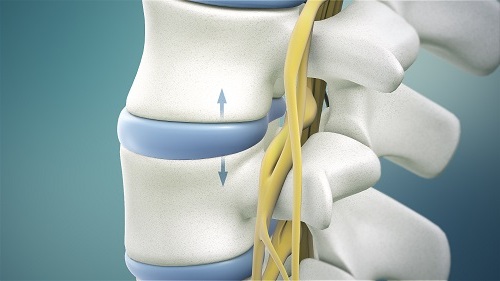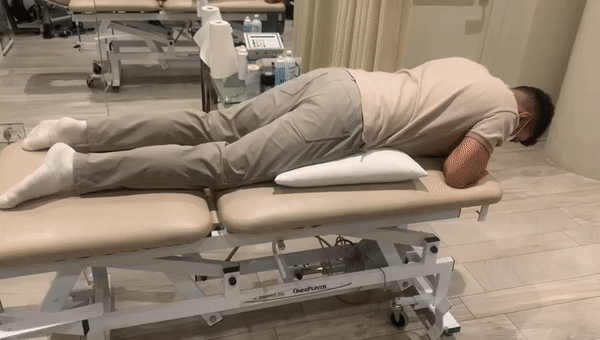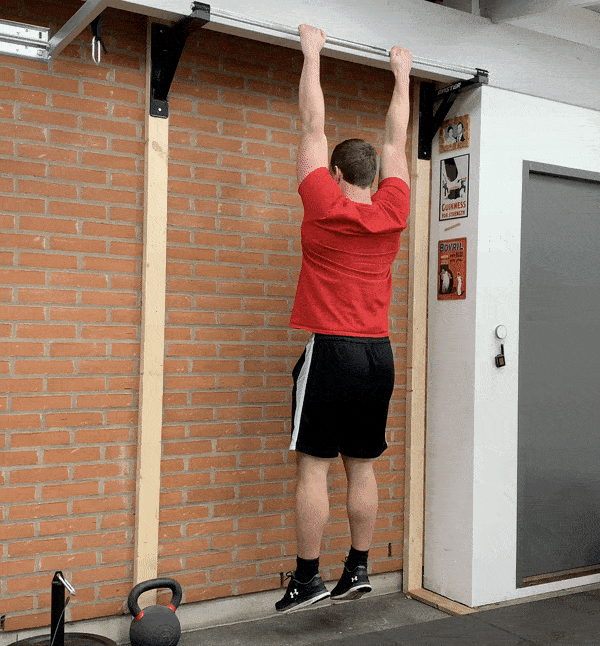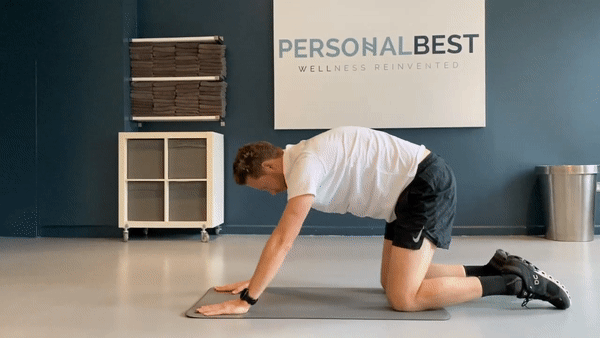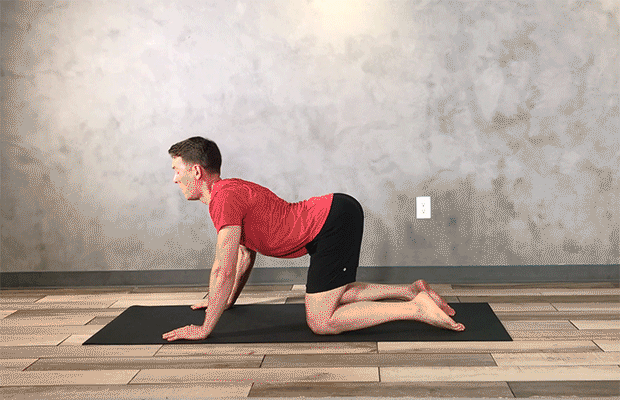Spinal Decompression at Home
Updated: Nov 10, 2022
Those of us who are suffering from lower back pain want nothing more than to get rid of this pesky pain. Many of us feel great after visiting our physiotherapist or chiropractor however the relief may last only a couple of days. One advanced treatment choice, spinal decompression, has been shown to provide many benefits for patients suffering from lower back pain. Unfortunately, the majority of us do not have a spinal decompression table at home as they are incredibly expensive and require healthcare providers to operate. Thus it is very beneficial to find ways in which you can retain the benefits of spinal decompression at home. Below we will outline some of the key exercises, stretches and home spinal decompression aids that will allow you to enjoy the comfort of spinal decompression at home. It is very important to consult with your healthcare practitioner to make sure that spinal decompression is suitable for your condition and equally important to make sure you are doing the exercises properly. There are certain conditions in which spinal decompression should not be used for, so make sure your check with your specialist.
Disclaimer: The information is provided for educational purposes only and does not substitute for professional medical attention and treatment by medical professionals. Users are solely responsible and accept all liability resulting from the use of the content and any related services or products. Although content may be provided by medical professionals, users acknowledge that access or use of the content does not create a provider-patient relationship and does not constitute medical advice, treatment, diagnosis, or services of any kind.
What conditions would warrant the use of spinal decompression?
The main injuries that are treated via spinal decompression are those in which there is increased pressure on your spine leading to pain. The four main conditions that have been shown to have great results with spinal decompression are;
Bulging discs/disc herniations
Degenerative Disc Disease
Spinal Stenosis
How does spinal decompression work?
Spinal decompression works by helping to alleviate pressure on your joints and nerves. This is done by increasing the space between your vertebrae or between your vertebrae and nerves. By “pulling” in the opposite direction of gravity to increase space and decrease pressure we are able to help alleviate our symptoms.
What are some spinal decompression exercises and stretches that I can do at home?
There are exercises which can work on the premise of spinal decompression and help give you relief of your lower back. However, it is very important to note that these exercises are guides and you should always consult a healthcare professional before commencing them. Furthermore, if the exercises are not indicated they may increase your pain levels, so please be sure to make sure these are suitable for you.
1) Prone Pillow Decompression Stretch
This exercise is to be done off of your bed or a table at home. It will help illicit decompression of the lower back.
1) Get a pillow and lay it on the bed/table.
2) Lie on your stomach and situate the pillow in your pelvic region and situate yourself so that your arms and head are hanging off the bed.
3) Stretch your arms and head downwards towards the floor.
4) Take deep and long breaths when you are doing this exercise.
4) Hold this position for 30-60 seconds. After a couple of days of beginning this exercise if you may hold the exercise for up to 2-3 minutes.
5) Complete this exercise for 20 minutes with 1-2 minute break between stretches.
6) You should feel a nice light stretch in the lower back and this will help allow decompression. If you feel an excessive amount of pain, stop the exercise.
7) If you do not feel the stretch you may add another pillow.
8) If after adding the pillow you still do not feel a stretch then you may add weight and hold onto it as you hang off the table.
9) Complete as needed throughout the day.
2) Side Lying Decompression
This exercise is very effective in helping decompress the lower back. It can be used as a stretch and can be converted into a strengthening exercise (For this exercise be sure to do it on both sides):
Stretch:
1) Lie on your side on your bed or couch.
2) Lie with your knees bent and heels together.
3) Drop your shins off the table
4) You should feel your pelvis drop on one side and your lower back being stretched. You want to hold for 20-30 seconds. This stretch should be completed for 10-15 minutes with 30 seconds breaks between reps.
5) Complete as needed throughout the day.
3) Bar Hang-Ups
If you have a pull-up or chin-up bar this is a great exercise to help reap the benefits of spinal decompression. This exercise literally is exactly what it sounds like; hanging yourself from a bar. Doing this will allow you to decompress the spine and help alleviate symptoms. Below are the steps to follow to complete this exercise safely, along with how many times and how long to do them;
1) Find a bar such as a pull-up or a chin-up bar, or a bar that is very sturdy.
2) Reach up and grab the bar and allow your body to hang on it
3) Once comfortable increase the amount of body weight that is hanging by relaxing your muscles
4) Hold for 10-30 seconds depending on your comfort levels
5) Let go of the bar and put your feet on the ground
6) Take a minute break and repeat 4-6 times
7) This exercise should be completed 2-3x/day
4) Overhead Stretches
This is a very easy exercise and does not require any equipment. Follow the steps below to get the benefits of this simple but effective exercise.
1) Stand on even ground with your legs shoulder width apart
2) Reach both of your arms above your head and then interlace your fingers
3) Now in this position, with your fingers interlaced and elbows straight pretend you are trying to reach up and touch the ceiling
4) Hold for 10-30 seconds based on your comfort levels
5) Complete as needed throughout the day
5) Prayer Stretch
This stretch is going to be performed on the floor. This stretch has been shown to provide a lot of relief for several people.
1) Get on the floor by getting down on all fours
2) Have your glutes touch your feet while on your knees
3) Now bend your hip and reach forward
4) The further forward you can reach the more you will feel this stretch (Be sure to not stretch so much that it hurts)
5) Hold this stretch for 10-30 based on your comfort levels
6) Get back up on your knees and redo the exercise after a minute|
7) Complete exercises 2-3x / day
6) Cat and Camel Exercise
This is another floor exercise which has had great results for patients.
1) Get on the floor by getting down on all fours
2) Position your palms so that they are right below your shoulders and your knees are in line with your hips.
3) Now while on all fours arch your back downwards by pushing your torso towards the ground(cat pose), come back up to normal position and now push your torso towards the ceiling creating a hump-like posture (camel position).
4) Alternate between these two positions while holding each for 2-5 seconds.
5) It is important to understand that in this exercise we go from one position into the next without any rest. Each time we do this it is considered one repetition.
6) Complete 20 repetitions
7) Complete 3-4x/day
What spinal decompression devices can I use at home?
Along with completing exercises, there are many products on the market that have been shown to give the benefits of spinal decompression. The premise behind these devices is that they put you in an upside position to decrease the effects of gravity on your spine. By doing this we are able to alleviate the pressure on our spines and help decrease symptoms. Research has shown that these tables do not provide long-lasting effects, however, they have been shown to provide temporary relief which is what spinal decompression at home is intended to do. Below is one of the premiere inversion table on the market
Teeter Hang Up / FitSpine 3X
This inversion has been shown to provide patients with relief of lower back symptoms. Teeter hang ups are one of the highest rated tables and have even been designated as a medical device through the FDA. This table has many amazing features such as sleek and suave design, this table comes 85% pre-assembled so it is easy to set up, it has great ankle supports and is even built to for patients anywhere from 4’8 and 6’6. If you are looking for an inversion table this may be a great product to look at.
Along with inversion tables, many people turn to wearing low back braces or back belts. It is very important to understand that when it comes to these belts it is not a one size fits all phenomenon. It is important to make sure that you speak to your healthcare practitioner before commencing use of one of these. Below we have listed an example of one of these devices.
Dr.Ho’s Spinal Decompression Belt
This decompression belt is a very interesting device as it claims to have clinical grade traction. It comes in two sizes, size A for 25”-41” waists and size B for 42”-55” waists. Via patient experience it has been shown to be very bulky, overheats and is not all that comfortable. Once again the size disparities really do not seem as though this device is the best to use for spinal decompression at home. It is very important to note that if you are going to be using a belt or brace that it is always best to have a custom fit and be fitted by a healthcare provider. This is one device you should think twice about before purchasing.
It is very important to note that not all devices are for everyone and you should always use a fine tooth comb when looking into products, especially when it comes to your health. Once again it is always important to consult with your healthcare professional before purchasing or using any medical devices.
Best Back Brace For Stability
If an inversion table or inflatable belt seems gimmicky and not all that promising, a more reasonable approach may be to invest in a quality back brace. If you’re looking at spinal decompression as an treatment option, likely your back pain is due to dealing with compressive forces and instability. The main thing to look for in a back brace would be a high degree of stability, and a strapping system that would allow you to stabilize over a greater portion of your torso. There are a few braces that match this in the market. If you want to avoid hassle, we recommend the Lordoloc brace by Medi Brace, which is the one we provide to patients at our clinic.
Next Steps
Spinal decompression has been helping many people that were otherwise losing hope with their troubling back pain. If you tried other therapies and the pain keeps coming back, it’s highly recommended you visit a spinal decompression specialist to assess your back pain.
If you're looking for spinal decompression in Toronto, send us a message about your pain. We offer free phone consultations directly with our doctors so that you can see if decompression therapy is right for you.


